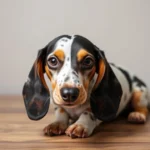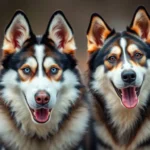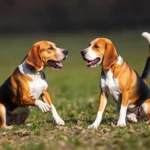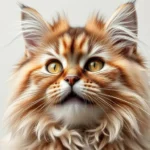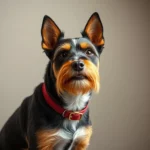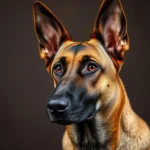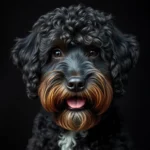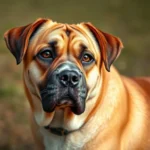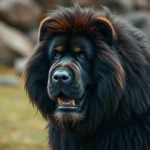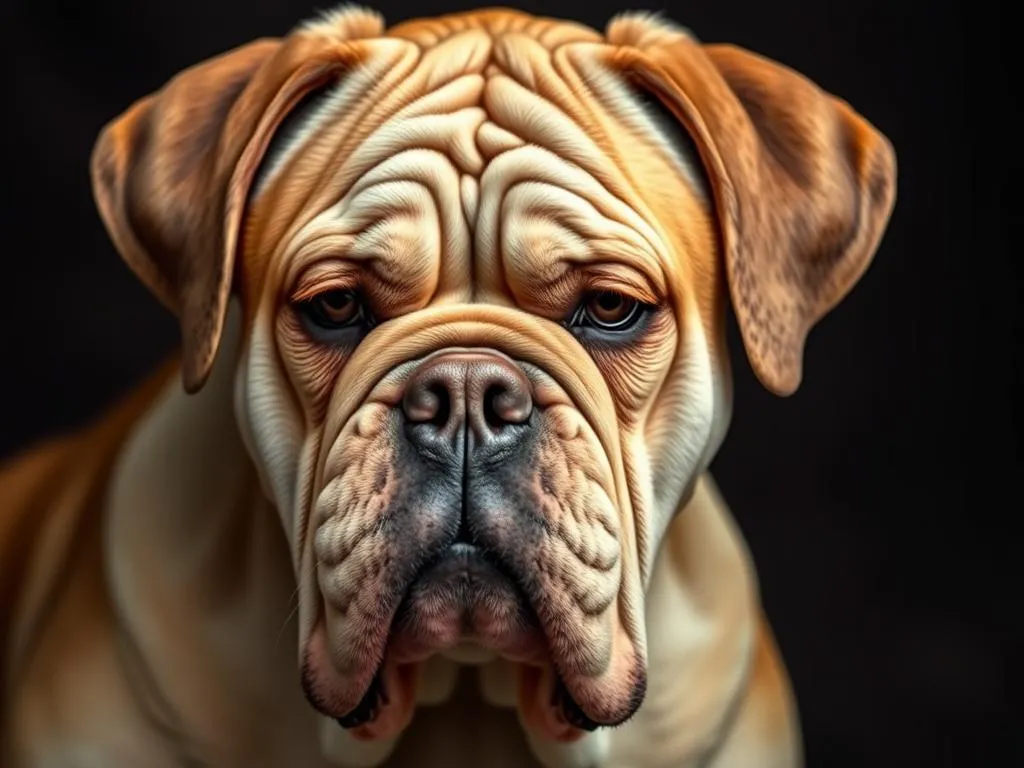
Introduction
Wrinkly dog breeds are characterized by their distinctive skin folds that give them a unique and adorable appearance. These breeds typically have loose skin that creates deep creases, resulting in the charming wrinkle-filled faces we often adore. Understanding the various aspects of these breeds is crucial for potential dog owners and enthusiasts alike, as it helps in making informed decisions about care, training, and health considerations.
In this article, we will explore the different characteristics of wrinkly dog breeds, delve into popular breeds such as Bulldogs and Pugs, discuss health considerations unique to these breeds, and provide essential grooming and training tips. By the end, you’ll have a comprehensive understanding of these endearing companions and what it takes to care for them.
Characteristics of Wrinkly Dog Breeds
Physical Traits
Wrinkly dog breeds are easily identifiable due to their unique physical features. Most share common characteristics such as:
- Skin Folds: The most defining trait, skin folds can vary in depth and size depending on the breed.
- Size: These breeds can range from small to large, with Pugs being on the smaller side and Neapolitan Mastiffs being significantly larger.
- Coat Type: Many wrinkly breeds have short, smooth coats, which can be easy to maintain but require specific care due to their skin folds.
Temperament
The temperament of wrinkly dog breeds can vary widely, but many are known for being:
- Friendly: Most wrinkly breeds are sociable and get along well with families and children.
- Protective: Breeds like the Bulldog and Neapolitan Mastiff are often good watchdogs due to their protective nature.
- Affectionate: Many of these dogs are known for being loyal companions, forming strong bonds with their owners.
Lifespan
The average lifespan of wrinkly dog breeds can range from 10 to 15 years, depending on the breed and overall health. Factors such as genetics, diet, exercise, and regular veterinary care can significantly influence their longevity.
Popular Wrinkly Dog Breeds
Bulldog
The Bulldog is one of the most iconic wrinkly dog breeds. With its distinctive pushed-in nose and loose skin, it’s hard not to fall in love with this breed.
- Physical Traits: Bulldogs are medium-sized dogs with a stocky build. Their skin folds are most prominent around the face and neck.
- Temperament: Known for their gentle and friendly demeanor, Bulldogs are great with children and make excellent family pets.
- Care Needs: Regular exercise is necessary, but they are prone to overheating, so walks should be moderate.
Pug
Pugs are another beloved breed recognized for their charming looks and playful personality.
- Physical Traits: Small in size, Pugs have round faces, large expressive eyes, and deep facial wrinkles that give them their adorable appearance.
- Temperament: They are sociable, affectionate, and full of energy, making them great companions.
- Care Needs: Pugs require regular exercise but should avoid strenuous activities due to their brachycephalic nature, which can lead to breathing difficulties.
Shar Pei
The Shar Pei is famous for its unique, deep wrinkles and distinct “hippopotamus” face.
- Physical Traits: This breed has a muscular build and a short coat that accentuates its wrinkles.
- Temperament: Shar Peis can be reserved and aloof with strangers but are deeply loyal to their families.
- Care Needs: They require consistent training and socialization from an early age to prevent stubborn behavior.
Basset Hound
Basset Hounds are known for their long ears and droopy faces, adding to their wrinkly charm.
- Physical Traits: With a long body and short legs, Basset Hounds have loose skin that creates folds around their face and body.
- Temperament: They are friendly, gentle, and good with kids, making them excellent family pets.
- Care Needs: Basset Hounds enjoy moderate exercise and should be monitored for weight gain, as they can become overweight easily.
Neapolitan Mastiff
The Neapolitan Mastiff is one of the largest wrinkly dog breeds, known for its impressive size and abundant skin folds.
- Physical Traits: This breed features a large, powerful build and thick skin with loose folds, particularly around the face and neck.
- Temperament: They are often calm and laid-back but can be protective of their families.
- Care Needs: Regular exercise is important, but they should not be overexerted due to their size and potential joint issues.
French Bulldog
The French Bulldog is a smaller breed that has gained immense popularity in recent years.
- Physical Traits: With their bat-like ears and short snouts, French Bulldogs have a compact and muscular frame adorned with delightful wrinkles.
- Temperament: They are playful, affectionate, and known for their sociable nature.
- Care Needs: French Bulldogs require regular exercise but should avoid excessive heat and humidity due to their brachycephalic structure.
Tzu (Shih Tzu)
The Shih Tzu is a small breed that is equally known for its charming personality and adorable wrinkles.
- Physical Traits: Shih Tzus have a long, flowing coat and pronounced facial wrinkles that give them a regal appearance.
- Temperament: They are friendly, outgoing, and great companions for families and individuals alike.
- Care Needs: Regular grooming is essential to maintain their coat, and they require moderate exercise.
Health Considerations for Wrinkly Dog Breeds
Common Health Issues
Wrinkly dog breeds may be prone to specific health problems due to their unique physical characteristics:
- Skin Infections: The folds in their skin can trap moisture and debris, leading to infections. Regular cleaning of the folds is crucial.
- Breathing Difficulties: Breeds like Bulldogs and Pugs may experience breathing issues due to their brachycephalic facial structure, especially in hot weather.
Preventive Care
Preventive care is essential for maintaining the health of wrinkly dog breeds. Regular veterinary check-ups and vaccinations can help catch potential problems early. Routine blood tests, dental cleanings, and parasite control are also important.
Skin Care Tips
Maintaining skin health is vital for wrinkly dog breeds. Here are some best practices:
- Regular Cleaning: Clean the skin folds weekly with a damp cloth to prevent infections.
- Drying: Ensure the folds are completely dry after baths or walks to avoid moisture buildup.
- Watch for Irritation: Monitor for signs of irritation or redness, and consult a vet if problems arise.
Grooming and Maintenance
Regular Grooming Needs
Grooming requirements for wrinkly dog breeds can vary, but generally include:
- Brushing: Regular brushing helps remove loose hair and dirt. Short-coated breeds may need less frequent brushing.
- Skin Fold Care: Cleaning skin folds is crucial to prevent infections.
Bathing Recommendations
Bathing should be done every few weeks, or as needed, depending on the dog’s activity level and coat condition. Use a gentle, hypoallergenic dog shampoo to avoid skin irritation.
Nail Care and Ear Cleaning
Nail trimming is important for all dog breeds to prevent discomfort and injury. Aim to trim nails every 3-4 weeks. Additionally, regular ear cleaning is essential to prevent wax buildup and infections, especially in breeds with floppy ears.
Training Wrinkly Dog Breeds
Basic Training Techniques
Effective training for wrinkly dog breeds involves positive reinforcement techniques. Use treats, praise, and playtime as rewards for good behavior. Keep training sessions short and engaging to maintain their interest.
Socialization Needs
Socialization is crucial for wrinkly breeds to ensure they are well-adjusted and comfortable around other dogs and people. Early exposure to various environments, sounds, and experiences can help prevent behavioral issues later on.
Common Behavioral Issues
Some typical behavioral problems in wrinkly dog breeds may include stubbornness, separation anxiety, and barking. Consistent training and socialization can help mitigate these issues.
Living with Wrinkly Dog Breeds
Ideal Living Conditions
Wrinkly dog breeds do well in various living situations, but ideally, they should have a comfortable indoor space where they can stay cool and relaxed. They may not require a large yard but benefit from access to a secure outdoor area for play and exercise.
Exercise Needs
Daily exercise is important for maintaining a healthy weight and preventing boredom. Most wrinkly dog breeds require moderate walks and playtime, with activities adjusted to their energy levels and physical capabilities.
Interaction with Families and Other Pets
These breeds typically thrive in family settings and are known for their affectionate nature. Many wrinkly dog breeds get along well with children and can also adapt to living with other pets, provided they are properly socialized.
Conclusion
In summary, wrinkly dog breeds are unique, charming companions that require specific care and attention. From understanding their physical characteristics and temperament to addressing health considerations and grooming needs, potential owners should be well-informed before bringing one of these delightful dogs into their home.
Owning a wrinkly dog can be a rewarding experience, but it comes with responsibilities. It’s essential to consider adopting from responsible breeders or shelters to ensure the health and well-being of your new companion.
FAQs
Common Questions about Wrinkly Dog Breeds
-
Do wrinkly dog breeds require special diets?
Yes, maintaining a balanced diet tailored to their specific needs is important for their health. -
How often should I take my wrinkly dog to the vet?
Regular check-ups at least once a year are recommended, with more frequent visits for older dogs or those with health issues.
Tips from Experienced Owners
- Monitor their weight: Many wrinkly breeds are prone to obesity, so keep an eye on their diet and exercise.
- Invest in quality grooming tools: Proper grooming tools can make maintaining their coat and skin folds much easier and more effective.
